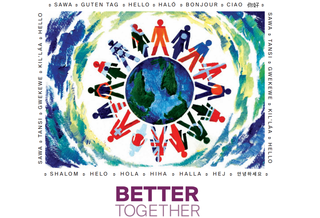Mating
5 Takeaways from the Treatment of Sexual Abusers Conference
The conference was beneficial, yet could improve upon one weakness.
Posted November 19, 2018
The Association for the Treatment of Sexual Abusers held its 37th Annual Research and Treatment Conference during October 2018 in Vancouver, British Columbia. The year’s theme of Better Together emphasized the need for those in the field of child sexual abuse prevention and intervention to recognize how we each rely on one another to make society safer (ATSA’s overarching goal).

Similar to my post from the 2017 ATSA conference, I have compiled five main takeaways from the 2018 event. In addition to four takeaways which highlight the progress of ATSA, I have expanded my scope to include an area of growth for ATSA from my perspective. The takeaways are intended for anyone in the mental health profession, from clinicians to researchers to advocates.
1. ATSA Continues to Recognize that Language Matters.
Language within the field of child sexual abuse has progressed considerably within the past year, moving toward even more inclusive person-first language. There has been a considerable shift in the ways in which mental health professionals and authors of peer-reviewed manuscripts describe people in their work. In general, the field has moved away from labeling individuals as “sex offenders” to using terms like “people with sexually abusive behavior," and from “pedophiles” to “individuals with an attraction to prepubescent children."
2. Not Everyone with a Sexual Attraction to Children Acts on that Attraction.
Perhaps even more remarkable than the use of more inclusive and less stigmatizing language is the continued move in the field to shed light on people (often older adolescents and young adults) who have a sexual attraction to children but who have not committed a sexual offense. Indeed, the field of child sexual abuse prevention is clearly moving toward work with individuals with an attraction to prepubescent children who don’t act on their attraction. Such work is focused on providing appropriate clinical resources to these individuals to help them accept their attraction and a fulfilling offense-free life. This work also focuses on research to understand the experiences of individuals with an attraction to prepubescent children who do not wish to harm children. It is groundbreaking and a necessary step to move the field forward.
3. Stigma is Experienced by Professionals in the Field.
Professionals in the field of child sexual abuse prevention and intervention often experience stigma themselves. It may be intuitive to some that prevention and intervention related to child sexual abuse is essential for making society safer. However, others so strongly identify with the stigma associated with child sexual abuse that they may stigmatize mental healthcare professionals and researchers doing work related to child sexual abuse. As an example, some mental healthcare providers have noted that they do not feel comfortable advertising their services for individuals with an attraction to children not only to protect their clients, but also to keep themselves safe. Despite the stigma, ATSA members persist.
4. It Is Not All about Sex.
For those readers who identify as a mental healthcare provider, something mentioned repeatedly throughout this and previous conferences is that for persons with sexually abusive behavior, treatment does not need to solely focus on sex. To summarize, it is not all about sex. People are three-dimensional, and even if their presenting concern is an unwanted attraction to children, that client likely has other concerns, just like the rest of us. Perhaps they want to have a healthy relationship, or have symptoms of depression or anxiety. While it can be easy to lose sight of the person, and to hone one’s awareness on the stigmatized clinical presentation (i.e., an attraction to children), thorough and effective intervention will often warrant a holistic approach.
5. A Multicultural Approach Is Encouraged for ATSA.
The Association for the Treatment of Sexual Abusers continues to invite a multicultural perspective, but this perspective does not appear to be widely adopted or spreading. However, it is encouraging that the most recent two ATSA conferences (2017 and 2018) included plenary speakers who focused on culture and/or disparities influencing individuals with sexually abusive behavior, and that select symposia included a talk related to racial/ethnic disparities or working with a specific cultural group. Yet, many presentations fail to mention race, ethnicity, and other identifiers entirely. Other cultural considerations, such as language and location (e.g., whether someone lives in a rural versus urban setting) are likely also important for clinical and research purposes. Progress is progress; so it is worth acknowledging the work of ATSA members to include spaces for multicultural considerations. Yet, increasing the rate at which we engage in such efforts would be beneficial to the field, and those we serve, as well. After all, we aim to make society safer, and that includes many individual communities.
This was a special post written by Dr. Rebecca L. Fix.


